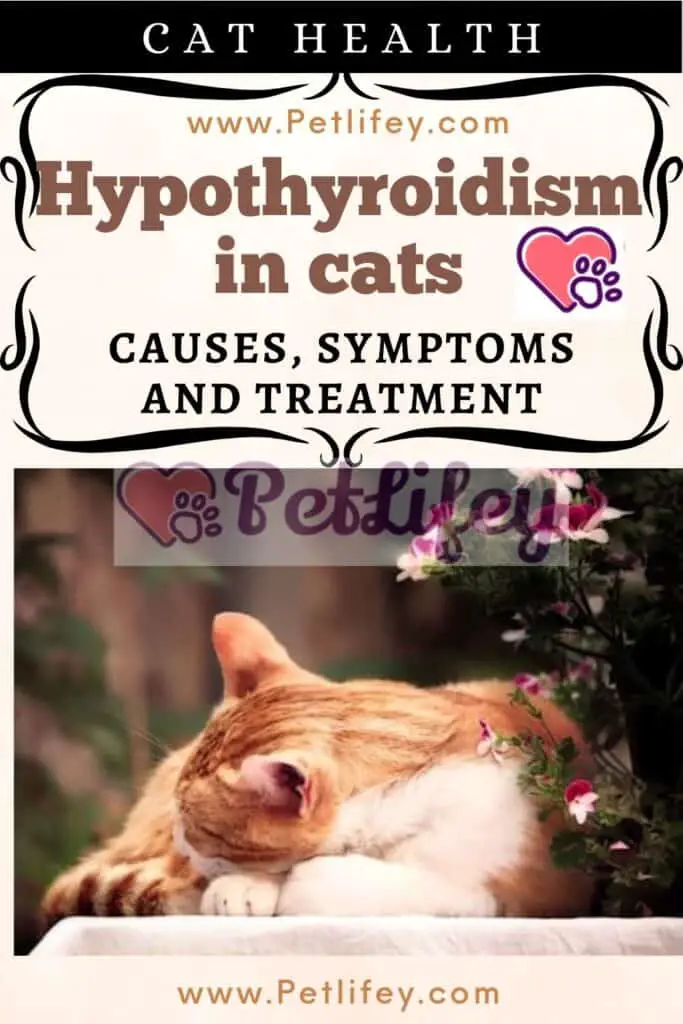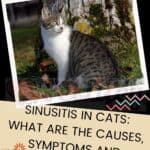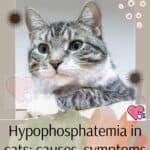
Hypothyroidism in cats is a rare disease for felines but should not be underestimated. Let’s see what the causes, symptoms and treatment are.
Hypothyroidism in cats is not a very common pathology, in fact the thyroid disorder that is most often found in this species is hyperthyroidism. The latter affects older cats very frequently, it is one in ten adult cats.
Hyperthyroidism in cats is an overactive thyroid, while hypothyroidism is a pathological condition characterized by a decrease in the production of thyroid hormones, such as thyroxine (T4) and triiodothyronine (T3). Thyroid hormones have many functions in the body.
They support the metabolic activity of many body tissues and increase oxygen consumption; regulates and controls the development of the body; helps synthesize proteins and fats; increases oxygen consumption; regulates body temperature; forms vitamins and is essential for the proper functioning of the nervous system.
Causes of hypothyroidism in cats
Hypothyroidism in cats can be acquired or congenital. When inadequate thyroid hormone production occurs in the course of life, hypothyroidism is defined as acquired, while congenital hypothyroidism is when the disease is present from birth.
The causes can be different but easy to interpret. It can be caused by the lack of thyroid development and in both cases it will be considered as primary hypothyroidism.
Gland atrophy and / or tumors or an alteration at any level of the hypothalamus-pituitary-thyroid axis, also known as the regulatory axis, can also be included. In the case of secondary hypothyroidism, the problem lies in the synthesis of thyroid hormones because the hormones that control the thyroid gland are not functioning properly.
Symptoms
Hypothyroidism in cats occurs under certain symptoms that are alarm bells that the feline has some problem that should not be underestimated, such as weight gain, which is the first factor to keep in mind. Other symptoms that usually occur in the animal are:
- lethargy or loss of interest in play or daily activity;
- dry and shaggy coat;
- hair loss;
- lowering of heart rate;
- lowering of temperature;
- constipation;
- loss of appetite in cats ;
- excessive thirst;
- increased predisposition to orthopedic pathologies;
- aggression or compulsive attitudes for anxiety. Sometimes they stop using the litter box properly.
If you suspect that your feline is sick, it is essential to take him to the vet in order to treat him as soon as possible. However, it may happen that the cat does not show symptoms compatible with hypothyroidism, but the level of thyroid hormones may still be lower.
This condition is called euthyroid sick syndrome and can be noticed with any other disease. Thyroid function remains normal despite low blood levels and therefore there is no need for treatment. While in case of the aforementioned symptoms, ignoring them could lead to serious complications and even death.
Diagnosis and treatment of hypothyroidism in cats

In order to diagnose hypothyroidism in cats, the only test of greater reliability is the measurement of the serum levels of thyroid hormones. These blood tests will confirm the reduced production of thyroid hormones below the reference range.
After the diagnosis, the doctor will proceed to underwrite the treatment which consists in the animal’s intake of a synthetic hormone, to bring blood values back to normal. This in most cases is the cure for which vets opt for the treatment of this pathology.
Monitoring the hypothyroid cat includes periodic visits to the vet. Checks are initially done every 2-4 weeks, or as needed. Subsequently, if the hypothyroid cat is clinically stable, checks are done every 4-6 months.
Keep in mind that the therapy must be carried out for life. In most hypothyroid cats the prognosis is good if the therapy is administered correctly, the cat can lead a really normal life and have a good life expectancy. The prognosis may be reserved in cats with hypothyroidism that are not treated and when a diagnosis is made is late.






